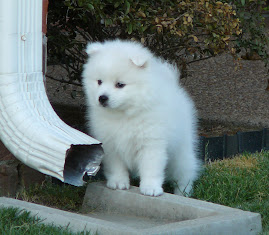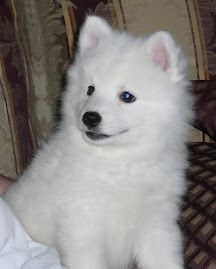 July 8, 2009
July 8, 2009If your Japanese Spitz are like mine, they LOVE treats. Even our most stubborn little girl, Ju-Ju, is more willing to carry out a command if I am holding a treat. However, it may not be a good idea to always use treats as a motivator. A good alternative may be using your dog's favorite toy. If the little guy craves praise and affection, this can be equally effective, as well.
Of course, there are times when using food as a reward is appropriate. Terry Long, a certified professional dog trainer in Long Beach, California and writer for Dog World magazine, suggests you ask yourself the following questions:
- Is your dog overweight and underperforming?
- Does using a toy as a reward interfere with the behavior you're training?
- Is your dog not toy-motivated in all the situations or locations you need a viable reward?
- Do you need to reward quickly and repeatedly without interrupting the flow of the behavior?
- Does your dog have an on-its-own-time attitude that you want to change?
- Are you finding that you are using more punishment in your training?
- Is your dog's performance dull or unenthusiastic?
If you said "yes" to one or more of these questions, the use of food training might be a good strategy for you. After all, food is convenient, doesn't require a lot of space and can be easily delivered.
Used strategically, food is a powerful motivator. Nevertheless, it is important to avoid excess weight gain, for your dog's good health. To ensure that you don't squander this precous commodity, use the following treat pay scale. Rate food rewards from the least to most desirable. The more difficult teh behavior, the tastier the treat!
- Kibble
- Healthy cereal, such as Cheerios
- Tiny crunchy treats
- Dried jerky
- Sausage roll
- Hot dogs
- Meatballs
- Cheese
- Chicken
- Steak
Keep in mind, the treats should be cut into small pieces. Too much of a good thing is never a good thing . . .












